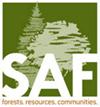建立生态系统的恢复力和适应能力:西南地区白杨生态与管理的系统综述
IF 1.5
4区 农林科学
Q2 FORESTRY
引用次数: 0
摘要
震杨(Populus tremuloides micx .)分布在美国西南部(即亚利桑那州、新墨西哥州和德克萨斯州)至墨西哥中部,在其分布范围的西南边缘具有很高的保护价值。这一价值是由白杨的生态重要性、对当地经济的积极影响以及审美和文化价值驱动的。总的来说,西南地区稀少的白杨种群缺乏恢复力和适应能力,管理人员不确定如何在不确定的未来最好地维持这个物种。本系统综述旨在通过回顾来自西南地区的关于生物和非生物因素影响白杨林动态的现有文献,并将这些文献与管理如何促进白杨林生态系统恢复力和适应能力的讨论相结合,来解决这一需求。我们发现,火灾和造林处理促进杨树再生,但慢性有蹄类浏览抑制招募。此外,干旱是导致林下植被死亡的一个因素,并对招募产生负面影响。在本综述的后半部分,我们提出了提高白杨恢复力和适应能力的三个管理目标:(1)促进年龄结构的多样性,(2)减轻有蹄类影响,(3)提高复杂性。我们考虑各种管理战略如何能够实现这些目标,并强调对白杨林健康和恢复力的潜在威胁。本文章由计算机程序翻译,如有差异,请以英文原文为准。
Building Ecosystem Resilience and Adaptive Capacity: a Systematic Review of Aspen Ecology and Management in the Southwest
Quaking aspen (Populus tremuloides Michx.) has high conservation value on the southwestern edge of its range, which extends from the southwestern United States (i.e., Arizona, New Mexico, and Texas) to central Mexico. This value is driven by aspen’s ecological importance, positive impact on local economies, and aesthetic and cultural values. Generally, the scant aspen populations that remain in the Southwest lack resilience and adaptive capacity, and managers are unsure how best to maintain the species in an uncertain future. This systematic review seeks to address that need by reviewing existing literature from the Southwest on which biotic and abiotic factors influence aspen forest dynamics and by synthesizing that literature with a discussion of how management can promote aspen ecosystem resilience and adaptive capacity. We found that fire and silvicultural treatments promote aspen regeneration, but chronic ungulate browse inhibits recruitment. Moreover, drought is a driver of overstory mortality and has a negative influence on recruitment. In the second half of this review, we propose three management objectives for increasing aspen resilience and adaptive capacity: (1) promote diversity in age structure, (2) mitigate ungulate impacts, and (3) enhance complexity. We consider how various management strategies could meet these objectives and highlight potential threats to aspen forest health and resilience.
求助全文
通过发布文献求助,成功后即可免费获取论文全文。
去求助
来源期刊

Forest Science
农林科学-林学
CiteScore
2.80
自引率
7.10%
发文量
45
审稿时长
3 months
期刊介绍:
Forest Science is a peer-reviewed journal publishing fundamental and applied research that explores all aspects of natural and social sciences as they apply to the function and management of the forested ecosystems of the world. Topics include silviculture, forest management, biometrics, economics, entomology & pathology, fire & fuels management, forest ecology, genetics & tree improvement, geospatial technologies, harvesting & utilization, landscape ecology, operations research, forest policy, physiology, recreation, social sciences, soils & hydrology, and wildlife management.
Forest Science is published bimonthly in February, April, June, August, October, and December.
 求助内容:
求助内容: 应助结果提醒方式:
应助结果提醒方式:


